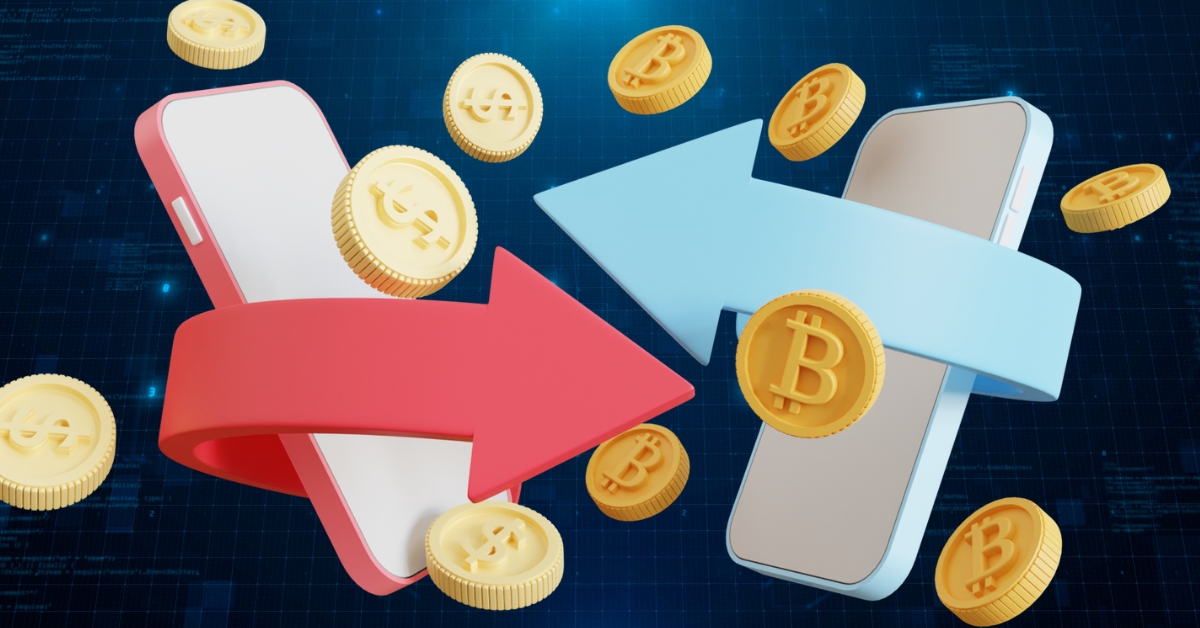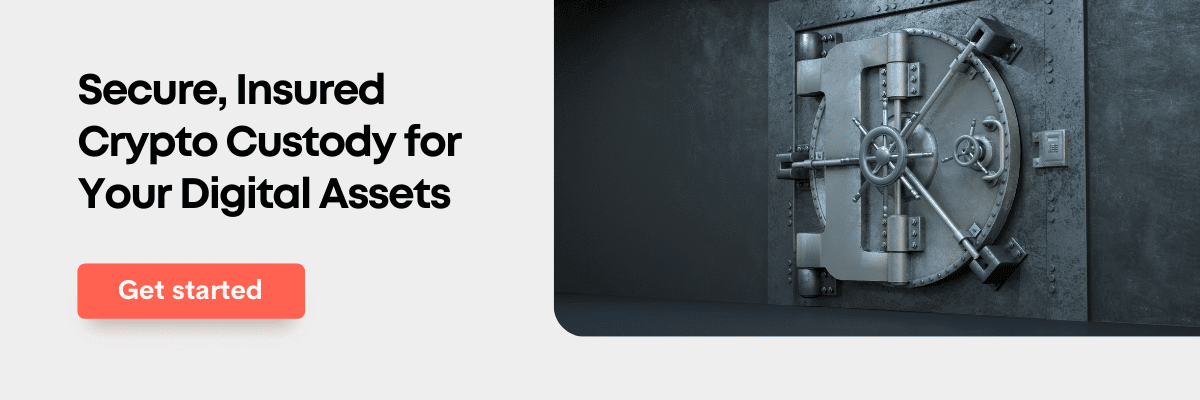2 Feb, 24
How does Crypto Borrowing Work in DeFi?

Decentralized Finance (DeFi) has revolutionized the way we think about financial transactions, with crypto borrowing being a significant aspect of this innovation. This article explores the concept of crypto borrowing within the DeFi ecosystem, providing insights into how it operates, the benefits it offers, and the risks involved.


Introduction to DeFi Crypto Borrowing
Crypto borrowing in DeFi allows users to take loans in cryptocurrency or stablecoins using their digital assets as collateral. Unlike traditional finance, DeFi operates on decentralized platforms built on blockchain technology, eliminating the need for intermediaries such as banks. Smart contracts automate the borrowing and lending processes, ensuring transparency and security for all parties involved.
The Mechanics of Crypto Borrowing
The process begins when a borrower deposits their cryptocurrency into a DeFi protocol’s liquidity pool as collateral. This collateral is usually required to be over the amount they wish to borrow, a practice known as over-collateralization. Borrowers can then obtain loans in different cryptocurrencies or stablecoins, which they can use for various purposes without selling their original assets.
Uses and Benefits of DeFi Borrowing
DeFi borrowing is popular for several reasons, such as leveraging trading positions, earning yield on otherwise idle assets, or accessing liquidity without the need to sell valuable holdings. It offers numerous advantages over traditional lending, including permissionless access (meaning no credit checks or KYC), transparency, the potential for high interest earnings for lenders, and flexibility for borrowers.
Risks Associated with DeFi Borrowing
However, engaging in DeFi borrowing is not without risks. The volatility of cryptocurrency markets means the value of collateral can fluctuate widely, potentially leading to liquidation if the collateral’s value falls below a required threshold. Smart contract vulnerabilities, variable interest rates, and the lack of regulatory oversight are additional risks borrowers and lenders must consider.
Real-world Applications: Case Studies
Platforms like MakerDAO and Aave illustrate the practical applications of DeFi borrowing. MakerDAO enables users to lock Ethereum as collateral to generate DAI, a stablecoin, while Aave offers a broader range of assets for borrowing and innovative features like flash loans, which require no upfront collateral.
The Future of DeFi Borrowing
The DeFi borrowing landscape is continuously evolving, with ongoing innovations aimed at improving user experience, security, and accessibility. As the sector matures, we may see more sophisticated risk management tools and regulatory frameworks developing, further solidifying DeFi’s position in the broader financial ecosystem.
Conclusion
Crypto borrowing in DeFi presents a compelling alternative to traditional lending, offering unparalleled flexibility, transparency, and access to liquidity. However, participants must navigate the inherent risks and stay informed about the rapidly changing DeFi landscape to make the most of these opportunities.
FAQs
- What is over-collateralization in DeFi borrowing? Over-collateralization refers to the requirement to deposit more in value as collateral than the amount being borrowed. This is a risk mitigation strategy to account for the volatility in the value of crypto assets.
- Can anyone participate in DeFi borrowing and lending? Yes, DeFi platforms are permissionless, meaning anyone with internet access and digital assets can participate without undergoing traditional credit checks or KYC procedures.
- What are the main risks of DeFi borrowing? The main risks include smart contract vulnerabilities, collateral volatility leading to potential liquidation, and variable interest rates that can affect borrowing costs and lending returns.
- How do flash loans work in DeFi? Flash loans are a unique feature of DeFi allowing users to borrow assets without collateral, under the condition that the loan is repaid within the same blockchain transaction. They are often used for arbitrage opportunities.
- Is DeFi borrowing safe? While DeFi borrowing offers many advantages, it also carries risks related to smart contract vulnerabilities, market volatility, and regulatory uncertainties. Participants should exercise caution and conduct thorough research before engaging.
About Zerocap
Zerocap provides digital asset liquidity and digital asset custodial services to forward-thinking investors and institutions globally. For frictionless access to digital assets with industry-leading security, contact our team at [email protected] or visit our website www.zerocap.com
DISCLAIMER
This material is issued by Zerocap Pty Ltd (Zerocap), a Corporate Authorised Representative (CAR: 001289130) of AFSL 340799. Material covering regulated financial products is issued to you on the basis that you qualify as a “Wholesale Investor” for the purposes of Sections 761GA and 708(10) of the Corporations Act 2001 (Cth) (Sophisticated/Wholesale Client). This material is intended solely for the information of the particular person to whom it was provided by Zerocap and should not be relied upon by any other person. The information contained in this material is general in nature and does not constitute advice, take into account the financial objectives or situation of an investor; nor a recommendation to deal. Any recipients of this material acknowledge and agree that they must conduct and have conducted their own due diligence investigation and have not relied upon any representations of Zerocap, its officers, employees, representatives or associates. Zerocap has not independently verified the information contained in this material. Zerocap assumes no responsibility for updating any information, views or opinions contained in this material or for correcting any error or omission which may become apparent after the material has been issued. Zerocap does not give any warranty as to the accuracy, reliability or completeness of advice or information which is contained in this material. Except insofar as liability under any statute cannot be excluded, Zerocap and its officers, employees, representatives or associates do not accept any liability (whether arising in contract, in tort or negligence or otherwise) for any error or omission in this material or for any resulting loss or damage (whether direct, indirect, consequential or otherwise) suffered by the recipient of this material or any other person. This is a private communication and was not intended for public circulation or publication or for the use of any third party. This material must not be distributed or released in the United States. It may only be provided to persons who are outside the United States and are not acting for the account or benefit of, “US Persons” in connection with transactions that would be “offshore transactions” (as such terms are defined in Regulation S under the U.S. Securities Act of 1933, as amended (the “Securities Act”)). This material does not, and is not intended to, constitute an offer or invitation in the United States, or in any other place or jurisdiction in which, or to any person to whom, it would not be lawful to make such an offer or invitation. If you are not the intended recipient of this material, please notify Zerocap immediately and destroy all copies of this material, whether held in electronic or printed form or otherwise.
Disclosure of Interest: Zerocap, its officers, employees, representatives and associates within the meaning of Chapter 7 of the Corporations Act may receive commissions and management fees from transactions involving securities referred to in this material (which its representatives may directly share) and may from time to time hold interests in the assets referred to in this material. Investors should consider this material as only a single factor in making their investment decision.
Like this article? Share
Latest Insights
Interview with Ausbiz: How Trump’s Potential Presidency Could Shape the Crypto Market
Read more in a recent interview with Jon de Wet, CIO of Zerocap, on Ausbiz TV. 23 July 2024: The crypto market has always been
Weekly Crypto Market Wrap, 22nd July 2024
Download the PDF Zerocap is a market-leading digital asset firm, providing trading, liquidity and custody to forward-thinking institutions and investors globally. To learn more, contact
What are Crypto OTC Desks and Why Should I Use One?
Cryptocurrencies have gained massive popularity over the past decade, attracting individual and institutional investors, leading to the emergence of various trading platforms and services, including
Receive Our Insights
Subscribe to receive our publications in newsletter format — the best way to stay informed about crypto asset market trends and topics.



 Share
Share  Tweet
Tweet  Post
Post 